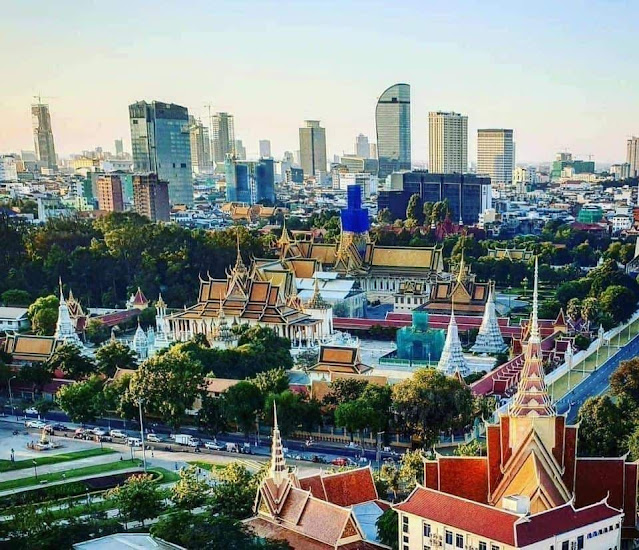| Publication date 16 February 2021 | 09:00 ICT
ក្រុមប្រឹក្សាអភិវឌ្ឍន៍កម្ពុជា (CDC) បានបញ្ចប់សេចក្តីព្រាងច្បាប់ស្តីពីការវិនិយោគ ដែលត្រូវបានគេទន្ទឹងរង់ចាំជាយូរមកហើយ។ សេចក្តីព្រាងនេះនឹងត្រូវបញ្ជូនទៅគណៈកម្មាធិការគោលនយោបាយ សេដ្ឋកិច្ច និងហិរញ្ញវត្ថុមុននឹងដាក់ជូនទីស្តីការគណៈរដ្ឋមន្ត្រី និងអង្គនីតិបញ្ញត្តិពិនិត្យពិភាក្សា។ គេរំពឹងថា ច្បាប់នេះអាចនឹងចូលជាធរមាននៅដំណាច់ឆមាសទី១ នៃឆ្នាំ ២០២១ នេះ ប្រសិនបើអ្វីៗដំណើរការទៅដោយរលូន។
សេចក្តីព្រាងច្បាប់នេះ ត្រូវបានគេរំពឹងថា នឹងជួយបង្កើនភាពអាចព្យាករបាន និងជំរុញយន្តការលើកទឹកចិត្ត ដែលមានលក្ខណៈកាន់តែអំណោយផល បន្ថែមលើអ្វីដែលមានស្រាប់នៅក្នុងច្បាប់បច្ចុប្បន្ន។
ការលើកទឹកចិត្តថ្មីត្រូវបានបង្កើតឡើងដោយផ្អែកលើការពិគ្រោះយោបល់រយៈពេលវែងជាមួយវិស័យឯកជន និងការពិភាក្សាផ្ទៃក្នុងក្នុងចំណោមភាគីពាក់ព័ន្ធសំខាន់ៗរបស់រាជរដ្ឋាភិបាល។ ជាយន្តការផ្ទៃក្នុងរាល់ការបញ្ចូលការលើកទឹកចិត្តថ្មីណាមួយគឺជាការតតាំងឥតឈប់ឈររវាងកាតព្វកិច្ចទ្វេ និងការអល់អែកនៃជម្រើសរវាងតម្រូវការនៃការរក្សា និងបង្កើនការប្រមូលចំណូលជាតិ និងតម្រូវការនៃការចិញ្ចឹមបីបាច់អាជីវកម្មរយៈពេលវែង និងការទាក់ទាញវិនិយោគថ្មីៗ។ វាប្រៀបដូចជាការពិភាក្សាអំពី "មាន់ និងស៊ុត" ថា តើមួយណាកើតមុន ទន្ទឹមគ្នានឹងការព្យាយាមមិនធ្វើឱ្យប៉ះពាល់ធ្ងន់ធ្ងរដល់កម្រិតចំណូលជាតិបច្ចុប្បន្ន។
ដើម្បីស្វែងយល់ពីច្បាប់នេះ ទិដ្ឋភាពរួមនៃកិច្ចប្រជុំលើកទី២១ នៃគណៈកម្មាធិការចម្រុះកម្ពុជា-ជប៉ុន ដែលបានធ្វើឡើងនៅថ្ងៃទី ១១ ខែ កុម្ភៈ ឆ្នាំ ២០២១ អាចបង្ហាញឱ្យឃើញនូវការប្រើប្រាស់ក្របខ័ណ្ឌច្បាប់ ដើម្បីដោះស្រាយនូវសេចក្តីកង្វល់នានារបស់វិនិយោគិន។
វេទិកានេះ គឺជាការសន្ទនារវាងវិស័យសាធារណៈ និងឯកជនស្តីពីលក្ខខណ្ឌសម្រាប់ការវិនិយោគ ហើយពេលខ្លះក៏សឹងតែអាចក្លាយជាការពិភាក្សាដេញដោលអន្តរភាគីរវាងស្ថាប័នពាក់ព័ន្ធនានារបស់រាជរដ្ឋាភិបាលផងដែរ។ វេទិកានេះ គឺផ្តោតសំខាន់ទៅលើវិនិយោគិនជប៉ុន ហើយការពិភាក្សាគឺមានកម្រិតបច្ចេកទេសខ្ពស់ ហើយលម្អិតខ្លាំងដែលបង្ហាញពីទិដ្ឋភាពជាក់ស្តែងនៃការធ្វើអាជីវកម្ម និងការអនុវត្តក្របខ័ណ្ឌការពារ និងថែរក្សាវិនិយោគ។
ភាគីជប៉ុនត្រូវបានតំណាងជាចម្បងដោយសមាគមធុរកិច្ចជប៉ុននៅកម្ពុជា (JBAC) ដែលបច្ចុប្បន្នមានសមាជិកជាក្រុមហ៊ុនជប៉ុនចំនួន ២៧០ ដែលធ្វើអាជីវកម្មលើវិស័យជាច្រើន ដូចជាឧស្សាហកម្មកម្មន្តសាល សំណង់អចលនទ្រព្យ ពាណិជ្ជកម្មដឹកជញ្ជូន ហិរញ្ញវត្ថុធានារ៉ាប់រង និងសេវាកម្ម។
ក្រុមហ៊ុនទាំងនេះសុទ្ធតែជាក្រុមហ៊ុនដែលមានស្តង់ដាអនុលោមភាពខ្ពស់ជាមួយនឹងច្បាប់របស់កម្ពុជា ហើយគោរពខ្ជាប់ខ្ជួនតាមបទប្បញ្ញត្តិថ្មីៗ វិធាននៅក្នុងសង្គមខ្មែរ និងគោរពលក្ខខណ្ឌការងារ។ ដូច្នេះសេចក្តីកង្វល់ទាំងឡាយរបស់ពួកគេតែងតែទទួលបានការយកចិត្តទុកដាក់យ៉ាងខ្លាំងពីសំណាក់រាជរដ្ឋាភិបាលកម្ពុជា។
ពិតណាស់ថា វេទិកាបែបនេះមានប្រយោជន៍មិនត្រឹមតែសម្រាប់វិនិយោគិនជប៉ុនប៉ុណ្ណោះទេ ប៉ុន្តែវាផ្តល់សារៈសំខាន់ជារួមសម្រាប់ការកែលម្អបរិយាកាស និងទំនុកចិត្តនៃការវិនិយោគនៅកម្ពុជាផងដែរ។
ក្រៅពីក្រុមប្រឹក្សាអភិវឌ្ឍន៍កម្ពុជាដែលមានតួនាទីជាអ្នកសម្របសម្រួលអ្នកពាក់ព័ន្ធសំខាន់ៗរបស់កម្ពុជារួមមានក្រសួងសេដ្ឋកិច្ច និងហិរញ្ញវត្ថុ អគ្គនាយកដ្ឋានពន្ធដារ អគ្គនាយកដ្ឋានគយ និងរដ្ឋាករ ក្រសួងពាណិជ្ជកម្ម ក្រសួងរ៉ែ និងថាមពល អគ្គិសនីកម្ពុជា ក្រសួងសាធារណការ និងដឹកជញ្ជូន ក្រសួងការងារ និងបណ្តុះបណ្តាលវិជ្ជាជីវៈ ក្រសួងបរិស្ថាន និងក្រសួងស្ថាប័នផ្សេងទៀត ដែលអាចប្រែប្រួលទៅតាមបញ្ហាប្រឈមដែលលើកឡើងដោយភាគីជប៉ុន។
ការពិភាក្សាបានផ្តោតលើបញ្ហាដែលមានកម្រិតបច្ចេកទេសខ្លាំងដូចជា (១) ការទូទាត់ប្រាក់បំណាច់អតីតភាពការងារ (២) សំណើអនុវត្តប្រព្រឹត្តិកម្មគណនេយ្យសម្រាប់វិស័យកាត់ដេរជាមួយនឹងវិស័យកម្មន្តសាលទាំងមូល (៣) ការអនុវត្តនីតិវិធីនាំចូលរថយន្ត និងការប្រកួតប្រជែងមិនស្មើភាព (៤) តារាងតម្លៃអគ្គិសនីថ្មី (៥) បញ្ហា “មូលនិធិទេយ្យទានបរិស្ថាន” ដែលជាយន្តការស្ម័គ្រចិត្ត និង “មូលនិធិបរិស្ថាន និងសង្គម” ដែលជាយន្តការជាប់កាតព្វកិច្ច (៦) ការពន្លឿនការបើកឱ្យដំណើរការច្រកព្រំដែនអន្តរជាតិស្ទឹងបត់ និង (៧) ការអភិវឌ្ឍធនធានមនុស្សបច្ចេកទេសដែលគាំទ្រដោយរដ្ឋាភិបាលជប៉ុន។
ការពិភាក្សាទល់មុខគ្នាបានជួយឱ្យភាគីទាំងសងខាងស្រាយបំភ្លឺអំពីគម្លាតនៃការបកស្រាយ និងការអនុវត្តបទប្បញ្ញត្តិថ្មីៗបង្ហាញពីសេចក្តីកង្វល់ទៅវិញទៅមក និងធ្វើបច្ចុប្បន្នភាពលើបញ្ហាគោលនយោបាយសំខាន់ៗ។
សេចក្តីកង្វល់សំខាន់ៗមួយចំនួនសម្រាប់ក្រុមហ៊ុនជប៉ុនគឺជាបញ្ហាប្រឈមជាលក្ខណៈរចនាសម្ព័ន្ធរបស់កម្ពុជា ដូចជាថ្លៃអគ្គិសនីនៅថ្លៃនៅឡើយ ការលំបាកក្នុងការបណ្តុះបណ្តាល និងស្វែងរកធនធានមនុស្សថ្នាក់គ្រប់គ្រង គុណភាព និងផលិតភាពបុគ្គលិក ការដំឡើងប្រាក់ឈ្នួលរបស់កម្មករ ហេដ្ឋារចនាសម្ព័ន្ធដឹកជញ្ជូនដែលនៅមានកម្រិតទាប និងការលំបាកក្នុងការស្វែងរកវត្ថុធាតុដើម និងគ្រឿងបន្លាស់ក្នុងស្រុក។ ការផ្គត់ផ្គង់វត្ថុធាតុដើម និងគ្រឿងបន្លាស់ក្នុងស្រុកនៅកម្ពុជាមានកម្រិតទាបណាស់ បើធៀបទៅនឹងតំបន់។
យោងតាមការស្ទង់មតិចុងក្រោយដែលធ្វើឡើងដោយអង្គការពាណិជ្ជកម្មក្រៅប្រទេសរបស់ជប៉ុន (JETRO) បានបង្ហាញថា នៅកម្ពុជា ធាតុចូលក្នុងស្រុកមានតែ ៥,៤ ភាគរយប៉ុណ្ណោះ ដែលអាចផ្គត់ផ្គង់ទៅឱ្យក្រុមហ៊ុនជប៉ុនបើប្រៀបធៀបទៅនឹងអត្រាយ៉ាងហោចណាស់ ២០ ភាគរយសម្រាប់ប្រទេសដទៃទៀតនៅក្នុងតំបន់។
បញ្ហាប្រឈមទាំងអស់ខាងលើនេះហើយដែលផ្តល់ជាមូលដ្ឋានគ្រឹះសម្រាប់ការតាក់តែងបន្ថែមនូវខ្លឹមសារនៃយន្តការលើកទឹកចិត្តថ្មីនៃសេចក្តីព្រាងច្បាប់ស្តីពីការវិនិយោគនេះ។
ឧទាហរណ៍ជាក់ស្តែង សេចក្តីព្រាងច្បាប់នេះផ្តល់នូវការលើកលែងអាករលើតម្លៃបន្ថែមសម្រាប់ការទិញធាតុចូលផលិតកម្មដែលផលិតក្នុងស្រុក។ សេចក្តីព្រាងច្បាប់នេះក៏ផ្តល់នូវអត្រាកាត់កងចំណាយពិសេសចំនួន ១៥០ ភាគរយពីមូលដ្ឋានគិតពន្ធសម្រាប់ការចំណាយរបស់ក្រុមហ៊ុនលើការស្រាវជ្រាវ ការអភិវឌ្ឍ និងនវានុវត្តន៍ ការអភិវឌ្ឍធនធានមនុស្សតាមរយៈការផ្តល់ការបណ្តុះបណ្តាលវិជ្ជាជីវៈ និងជំនាញដល់កម្មករនិយោជិតខ្មែរ ការធ្វើទំនើបកម្មគ្រឿងម៉ាស៊ីនដើម្បីបម្រើដល់ខ្សែចង្វាក់ផលិតកម្ម ការសាងសង់កន្លែងស្នាក់នៅ អាហារដ្ឋាន ទារកដ្ឋាន ការផ្តល់មធ្យោបាយដឹកជញ្ជូនប្រកបដោយផាសុកភាព និងការចំណាយផ្សេងទៀតដែលមានគោលបំណងលើកកម្ពស់សុខុមាលភាពរបស់កម្មករ-និយោជិតខ្មែរ។
ទាំងនេះ គឺជាការរកដំណោះស្រាយតាមលក្ខណៈគោលនយោបាយជាក់ស្តែង ដែលត្រូវបានផ្តល់ដោយសេចក្តីព្រាងច្បាប់ថ្មីនេះ ដើម្បីលើកកម្ពស់សមត្ថភាពប្រកួតប្រជែងក៏ដូចជាផ្តល់ការគាំទ្រសុខុមាលភាពដល់កម្មករខ្មែរ ដែលជាលទ្ធផលដំណោះស្រាយទាំងនោះក៏អាចឆ្លើយតបផងដែរ ចំពោះបញ្ហាប្រឈមនានាដែលត្រូវបានលើកឡើងដោយក្រុមហ៊ុនជប៉ុនដូចខាងលើ។
លើសពីនេះទៀត ការលើកលែងពន្ធត្រូវបានកែលម្អដើម្បីធ្វើឱ្យមានលក្ខណៈកាន់តែអំណោយផលសម្រាប់គម្រោងវិនិយោគដែលមានលក្ខណសម្បត្តិគ្រប់គ្រាន់ (QIPs) ដែលអាចទទួលបានរយៈពេលលើកលែងពន្ធលើប្រាក់ចំណូលពី ៣ ទៅ ៩ ឆ្នាំ គិតចាប់ពីពេលដែលទទួលបានប្រាក់ចំណូលលើកដំបូង។
បន្ទាប់ពីផុតរយៈពេលលើកលែងពន្ធលើប្រាក់ចំណូល គម្រោង QIPs មានសិទ្ធិទទួលបានការលើកទឹកចិត្តឱ្យបង់ពន្ធលើប្រាក់ចំណូលតាមអត្រាកំណើនតាមពេលសម្រាប់រយៈពេល ៦ ឆ្នាំ។ គម្រោងទាំងនោះមានសិទ្ធិនាំចូលដោយពន្ធគយ អាករពិសេស និងអាករលើតម្លៃបន្ថែមជាបន្ទុករបស់រដ្ឋ។
ទាក់ទងនឹងទិដ្ឋភាពប្រតិបត្តិការសេចក្តីព្រាងច្បាប់នេះក៏បានយកចិត្តទុកដាក់លើការលើកកម្ពស់ការសម្របសម្រួលវិនិយោគជាពិសេសតាមរយៈការធ្វើឱ្យប្រសើរឡើងនូវ “យន្តការច្រកចេញ-ចូលតែមួយ”។
ឆ្លងកាត់មេរៀនបទពិសោធន៍ពីស្ថានភាពនៃជំងឺកូវីដ១៩ សេចក្តីព្រាងច្បាប់នេះក៏បានផ្តល់ដល់រាជរដ្ឋាភិបាលនូវភាពបត់បែនក្នុងការផ្តល់ការលើកទឹកចិត្តពិសេស សម្រាប់វិស័យអាទិភាពជាក់លាក់ណាមួយ ដែលយើងមិនអាចព្រាងទុកជាមុនបាន ឬវិស័យឧស្សាហកម្មទើបកកើតថ្មី តាមរយៈការដាក់បញ្ចូលទៅក្នុងច្បាប់ស្តីពីការគ្រប់គ្រងហិរញ្ញវត្ថុ ដែលត្រូវឆ្លងសភាជារៀងរាល់ឆ្នាំ។
ស្ថិរភាព និងភាពអាចព្យាករបានគឺជាគន្លឹះសម្រាប់ទំនុកចិត្តវិនិយោគ។ និយាយផ្ទុយមកវិញ អស្ថិរភាព និងភាពមិនអាចព្យាករបាន គឺជាសត្រូវរបស់វិនិយោគិន។ ទោះបីជាមានភាពទាក់ទាញតាមរយៈយន្តការលើកទឹកចិត្តក៏ដោយ វាជារឿងធម្មតាដែលវិនិយោគិនតែងតែខិតខំស្វែងយល់ពីហានិភ័យទុកជាមុន ហើយមានការប្រុងប្រយ័ត្នខ្ពស់បំផុត ចំពោះការផ្លាស់ប្តូរគោលនយោបាយដែលមានលក្ខណៈប្រញាប់ប្រញាល់ភ្លាមៗដែលអាចបង្កជាការរំខានធ្ងន់ធ្ងរដល់ការរៀបចំផែនការ វិនិយោគរយៈពេលមធ្យម និងវែង។
ស្ថិរភាពនយោបាយសង្គម និងម៉ាក្រូសេដ្ឋកិច្ចរឹងមាំ គឺជាធនធានដ៏សមប្រកប និងអំណោយផលសម្រាប់ប្រទេសកម្ពុជាក្នុងរយៈពេល ២ ទសវត្សរ៍ចុងក្រោយនេះដែលជាកត្តាជំរុញកំណើនទំនុកចិត្តវិនិយោគកាន់តែខ្លាំងឡើង។
យ៉ាងណាក្តី កម្ពុជានៅតែត្រូវខិតខំប្រឹងប្រែងបន្ថែមទៀតដើម្បីទទួលបានការទុកចិត្ត និងការជឿជាក់ពីវិនិយោគិន ជាពិសេសនៅក្នុងទិដ្ឋភាពនៃការរៀបចំក្របខ័ណ្ឌច្បាប់ និងភាពប្រាកដប្រជាក្នុងការអនុវត្តជាក់ស្តែង ដើម្បីរក្សា និងពង្រឹងសមត្ថភាពប្រកួតប្រជែងរបស់កម្ពុជានៅក្នុងតំបន់៕
ស៊ឹម វីរៈ ទីប្រឹក្សាយុទ្ធសាស្ត្រនៃវិទ្យាស្ថានចក្ខុវិស័យអាស៊ី (AVI)


